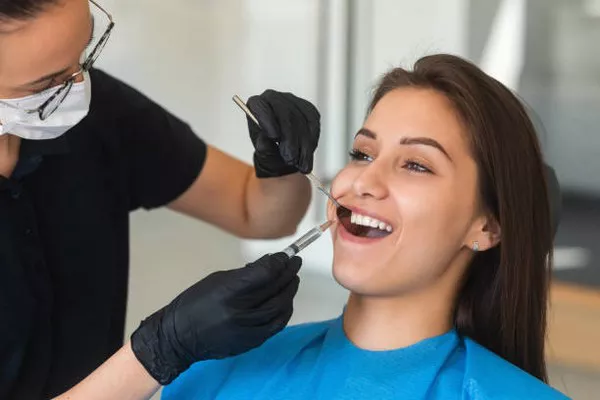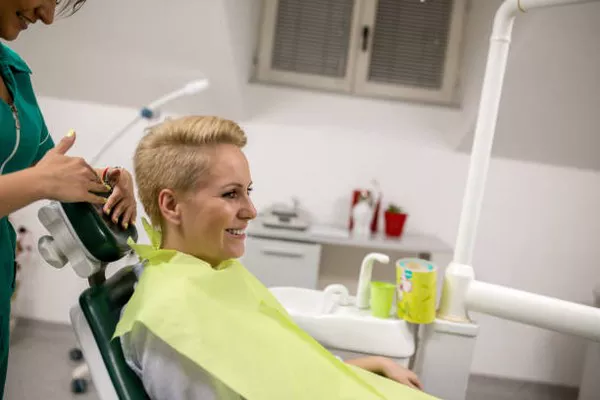Teeth whitening has become a popular cosmetic dental procedure, with numerous methods and products available to help individuals achieve a brighter smile. KOR Whitening is one such option, known for its efficacy in treating even stubborn stains like those caused by tetracycline. However, before diving into the process, it’s essential to understand the various aspects associated with KOR Whitening, including its cost, procedure, expected results, and maintenance requirements.
Cost Range
Present the cost range for KOR whitening, which can vary from $500 to $1,200, with some sources mentioning up to $3,500. The cost of KOR Whitening can vary based on several factors, including the severity of staining, the number of treatments required, and the geographic location of the dental practice.
Factors Influencing Cost
Several factors influence the cost of KOR Whitening. Firstly, the level of staining plays a significant role. Stubborn stains, such as those caused by tetracycline or excessive fluoride, may require more extensive treatment, thus increasing the overall cost. Additionally, the number of treatments needed can affect the final price. Some individuals may achieve desired results with just one treatment, while others may require multiple sessions, leading to higher costs. Furthermore, the geographic location of the dental practice can impact pricing, with practices in urban areas typically charging more than those in rural areas.
Procedure Overview
The KOR Whitening process begins with a consultation with a dental professional to assess the patient’s suitability for the treatment. If deemed appropriate, the dentist will take impressions of the patient’s teeth to create customized KOR-Seal trays. These trays are designed to fit snugly over the teeth, ensuring even distribution of the whitening gel.
During the treatment, patients use the KOR-Seal trays at home, applying a refrigerated, peroxide-based whitening gel as instructed by their dentist. The gel works to break down stains and discoloration, revealing a brighter, whiter smile. Depending on the severity of staining, treatment duration may vary, with some patients seeing results in as little as two weeks, while others may require up to eight weeks of treatment.
In some cases, an in-office whitening session may be recommended following the at-home treatment to enhance results further. During this session, a more potent whitening agent may be applied to the teeth under the supervision of a dental professional.
Expected Results
The expected results of KOR Whitening can vary from patient to patient. However, many individuals experience significant whitening, even in cases of severe staining caused by tetracycline or other factors. KöR Whitening is known for its ability to achieve dramatic results, often surpassing those of other whitening methods.
Patients can expect their teeth to become several shades whiter after completing the KOR Whitening treatment. However, it’s essential to note that the longevity of results depends on various factors, including diet, oral hygiene practices, and lifestyle habits. Maintaining good oral hygiene and avoiding stain-causing foods and beverages can help prolong the whitening effects.
Duration of Treatment
The duration of KOR Whitening treatment can vary depending on the individual’s needs and the severity of staining. In general, patients undergo daily at-home treatments for two to eight weeks, using the KOR-Seal trays and whitening gel provided by their dentist. Following the at-home treatment, some patients may opt for an additional in-office whitening session to enhance results further.
The at-home treatment typically involves wearing the KOR-Seal trays with the whitening gel for a specified amount of time each day, as recommended by the dentist. Patients should adhere to the treatment schedule to achieve optimal results within the expected timeframe.
Maintenance
Maintaining the results of KöR Whitening requires ongoing care and maintenance. While the initial treatment can significantly whiten the teeth, the effects may diminish over time without proper upkeep. To sustain the whitening results, patients should follow a diligent oral hygiene routine, including brushing and flossing regularly.
Additionally, patients may need to undergo periodic touch-up treatments to combat any new staining and maintain the brightness of their smile. The frequency of touch-up treatments can vary depending on individual factors such as diet, lifestyle habits, and oral hygiene practices.
Pros and Cons
Like any dental procedure, KOR Whitening has its advantages and disadvantages.
Pros:
- Effectiveness: KOR Whitening is known for its ability to treat even stubborn stains, such as those caused by tetracycline, effectively.
- Less Sensitivity: Compared to some other whitening methods, KOR Whitening is less likely to cause tooth sensitivity,making it a more comfortable option for many patients.
Cons:
- Higher Cost: KOR Whitening tends to be more expensive than other whitening methods, making it less accessible to some individuals.
- Time-Consuming: The treatment duration for KOR Whitening can be longer compared to other whitening methods, requiring daily at-home treatments for several weeks.
Comparison with Other Methods
When comparing KOR Whitening with other available whitening treatments, several factors come into play, including cost, effectiveness, and longevity of results.
In terms of cost, KOR Whitening typically falls on the higher end of the spectrum, with prices ranging from $500 to $1,200 or more. While the initial investment may be higher, many individuals find the long-term results and effectiveness of KOR Whitening worth the expense.
In comparison to over-the-counter whitening products, such as whitening toothpaste or strips, KOR Whitening offers superior results, especially for stubborn stains. While over-the-counter products may be more affordable and convenient, they often provide less dramatic whitening and may not be suitable for severe staining.
Professional in-office whitening treatments, such as laser or light-activated whitening, are another option for achieving a brighter smile. While these treatments can produce quick results, they may not be as effective for treating deep, intrinsic stains. Additionally, in-office treatments can be more expensive than at-home options like KOR Whitening.
Insurance and Financing
Teeth whitening procedures, including KOR Whitening, are typically considered cosmetic treatments and are not covered by dental insurance. However, some dental practices may offer financing options or payment plans to help make the treatment more affordable for patients. It’s essential for individuals to inquire about available financing options and payment plans when discussing treatment with their dentist.
Customer Reviews and Testimonials
Customer reviews and testimonials can provide valuable insight into the effectiveness and satisfaction of KOR Whitening. Many individuals who have undergone the treatment report significant improvements in the brightness and appearance of their smiles. Before-and-after photos can also serve as visual evidence of the treatment’s effectiveness, showcasing real-world results achieved by patients.
Conclusion
KOR Whitening offers a highly effective solution for achieving a brighter, whiter smile. While the cost may be higher compared to some other whitening methods, many individuals find the long-term results and minimal sensitivity associated with KöR Whitening worth the investment. By understanding the procedure, expected results, and maintenance requirements, individuals can make an informed decision about whether KOR Whitening is the right choice for enhancing their smile.
FAQs about KOR Whitening
1. Why is KOR Whitening so expensive?
KOR Whitening is often considered more expensive compared to other whitening methods due to several factors. Firstly, KOR Whitening is known for its effectiveness, especially in treating stubborn stains like those caused by tetracycline. The advanced technology and high-quality materials used in the KOR Whitening system contribute to its higher cost. Additionally, the treatment involves custom-made KOR-Seal trays and professional supervision, which further adds to the overall expense. Despite the higher cost, many individuals find the long-term results and minimal sensitivity associated with KOR Whitening worth the investment.
2. How much does a KOR Whitening system cost?
The cost of a KöR Whitening system can vary depending on several factors, including the dental practice, the severity of staining, and the number of treatments required. On average, the cost of KOR Whitening ranges from $500 to $1,200. However, some sources mention prices up to $3,500 for more extensive treatments or additional in-office sessions. It’s essential to consult with a dental professional to determine the exact cost based on individual needs and treatment goals.
3. Does KOR Whitening really work?
Yes, KOR Whitening is known for its effectiveness in achieving significant whitening results, even for stubborn stains. The system utilizes a refrigerated, peroxide-based whitening gel and custom-made KOR-Seal trays to break down stains and discoloration, revealing a brighter, whiter smile. Many individuals who have undergone KOR Whitening report noticeable improvements in the appearance of their teeth. However, the extent of whitening and duration of results can vary depending on factors such as the severity of staining and adherence to the treatment regimen.
4. How long does KOR Whitening last?
The longevity of KOR Whitening results can vary depending on individual factors such as diet, oral hygiene practices, and lifestyle habits. With proper care and maintenance, KOR Whitening results can last for an extended period, often several years. However, it’s essential to avoid stain-causing foods and beverages and follow a diligent oral hygiene routine to prolong the effects of the treatment. Periodic touch-up treatments may also be recommended to combat any new staining and maintain the brightness of the smile. Overall, while KOR Whitening offers long-lasting results, ongoing maintenance is key to preserving the whitening effects over time.
You Might Be Interested In






























